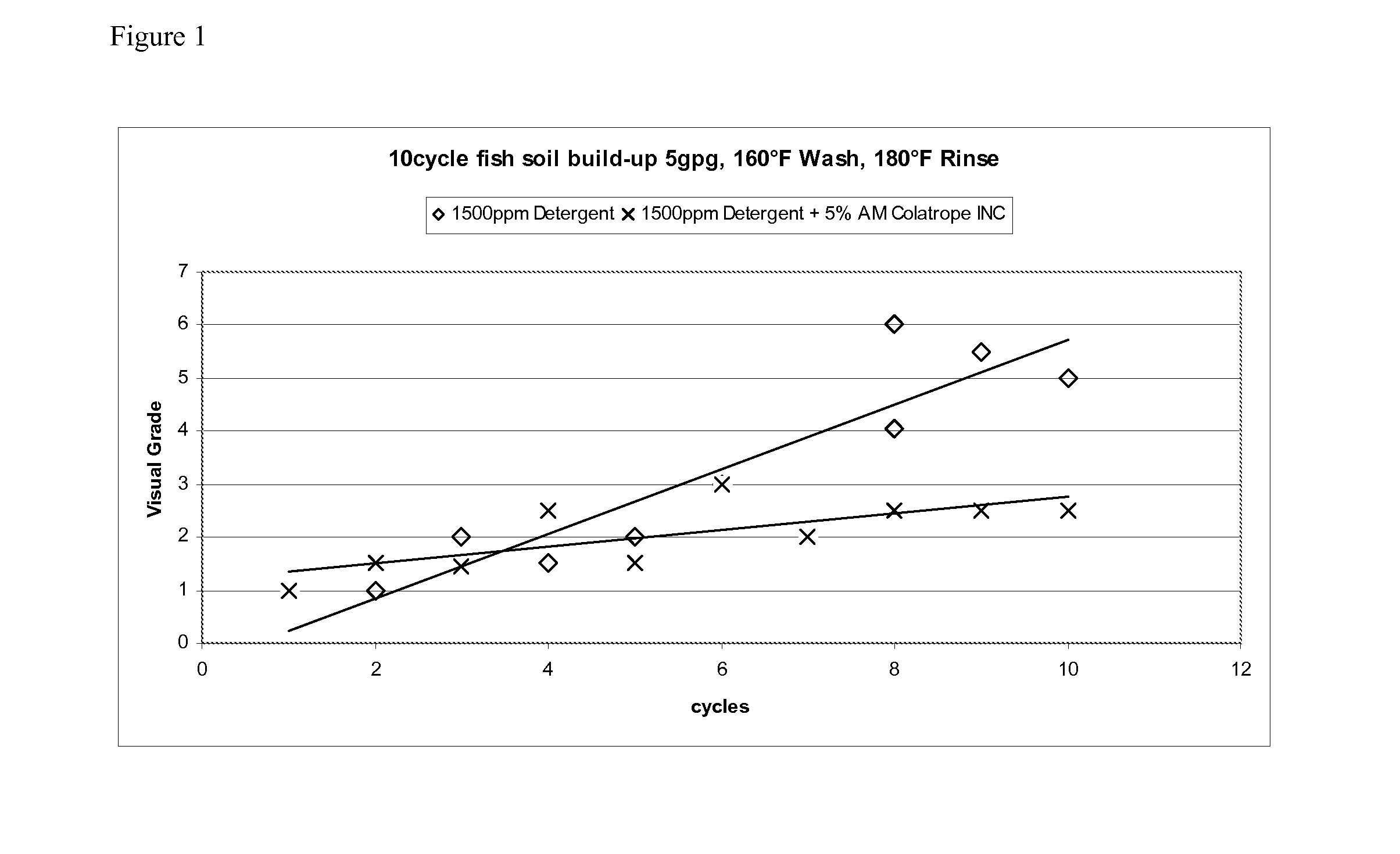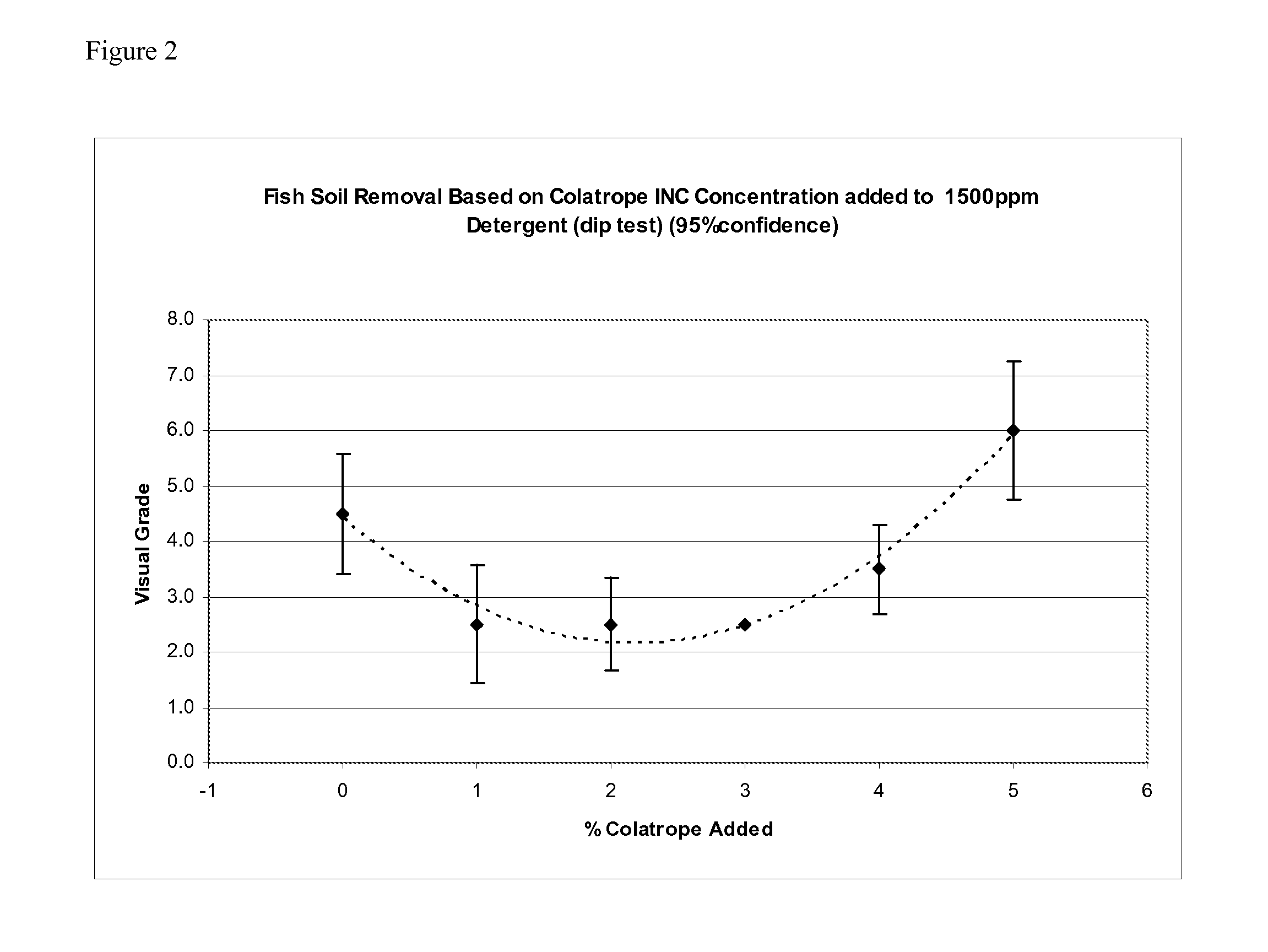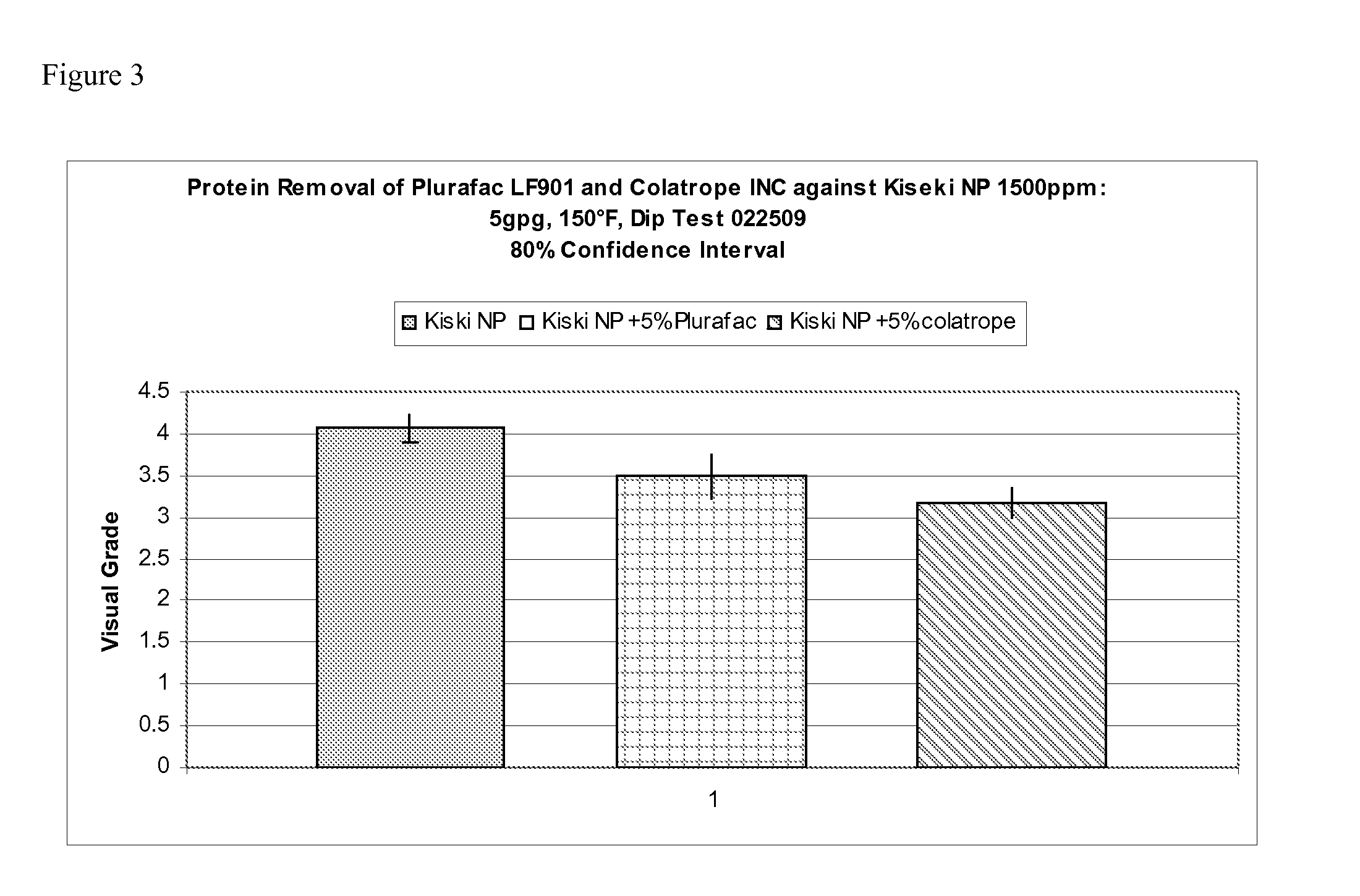Detergent composition for removing fish soil
- Summary
- Abstract
- Description
- Claims
- Application Information
AI Technical Summary
Benefits of technology
Problems solved by technology
Method used
Image
Examples
example 1
[0160]This example demonstrates the efficacy of compositions of the present invention at removing raw fish soil in stagnant water.
[0161]A solution of 1500 ppm detergent was prepared according to the following formula:
Component% by WeightSodium Carbonate52.13Trisodium NTA monohydrate19.83Sodium Polyacrylate0.98Calcium Chloride1.01Sodium bicarbonate2.88Sodium Metasilicate3.00Sodium Aluminate0.20Pentasodium11.58DiethylenetriaminepentaaceticacidDiethylenetriaminepentaacetic0.71acidCitric Acid2.06Sodium Aluminate1.04Lauryl Alcohol3.53Ethoxy-propoxy copolymer1.06
[0162]Ceramic tiles were soiled according to the above test method. The soiled tiles were placed in a solution of 1500 ppm detergent with 5 wt % active agent (or 75 ppm) at 150° F. for 5 minutes in 5 grains per gallon (gpg) water. The potential active agent additives were selected from the following table:
Tested Active AgentPotassium CarbonatePotassium ChlorideIsononanoic Acid Sodium SaltAccusol ™ 445 (Rohm & Haas)PercarbonateBLVD...
example 2
[0164]This example demonstrates protein buildup in an automatic warewashing machine using detergent with and without Cola®Trope INC sodium isononanoate over 10-cycles. Detergent was prepared according to the formula provided in Example 1 above. Five percent Cola®Trope INC sodium isononanoate was added to the detergent for half of the samples. Detergent alone was used for the other, half of the samples.
[0165]Ten tiles were soiled as provided above and washed in an AM14 automatic dishwasher available from Hobart located in Troy, Ohio with a wash and rinse cycle of 70 seconds. After the cycles were complete, the tiles were taken out of the machine. A first was set aside and the remaining 9 tiles were soiled and rewashed. After every cycle a tile was removed until the buildup of soil could be seen over 10 cycles on a single tile. The results of this demonstrated that the tiles using 1500 ppm detergent with a 5% wt % Cola®Trope INC sodium isononanoate active agent additive were substanti...
example 3
[0168]This Example demonstrates improved soil removal within a range of active agent concentration
[0169]Detergent was prepared according to the formula provided in Example 1. Cola®Trope INC sodium isononanoate was added to the detergent in varying concentrations and soiled tiles were placed in use solutions according to the protocol of Example 1. The tiles were visually inspected. Results showed that soil removal was maximized when the active agent used was Cola®Trope INC sodium isononanoate at a concentration of between about 0.5 and 4 wt %, between about 1 and 3% wt %, or about 2 wt % resulting in about 30 ppm actives Cola®Trope INC sodium isononanoate. Results are shown in FIG. 2.
PUM
 Login to View More
Login to View More Abstract
Description
Claims
Application Information
 Login to View More
Login to View More - R&D
- Intellectual Property
- Life Sciences
- Materials
- Tech Scout
- Unparalleled Data Quality
- Higher Quality Content
- 60% Fewer Hallucinations
Browse by: Latest US Patents, China's latest patents, Technical Efficacy Thesaurus, Application Domain, Technology Topic, Popular Technical Reports.
© 2025 PatSnap. All rights reserved.Legal|Privacy policy|Modern Slavery Act Transparency Statement|Sitemap|About US| Contact US: help@patsnap.com



